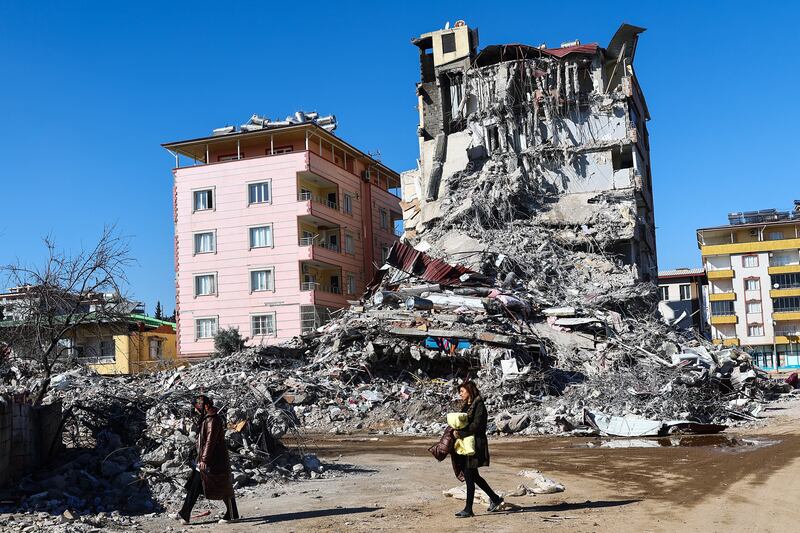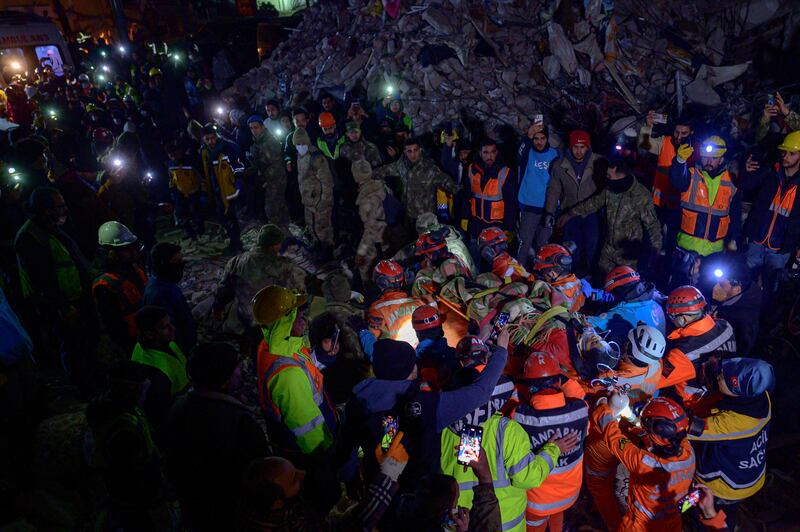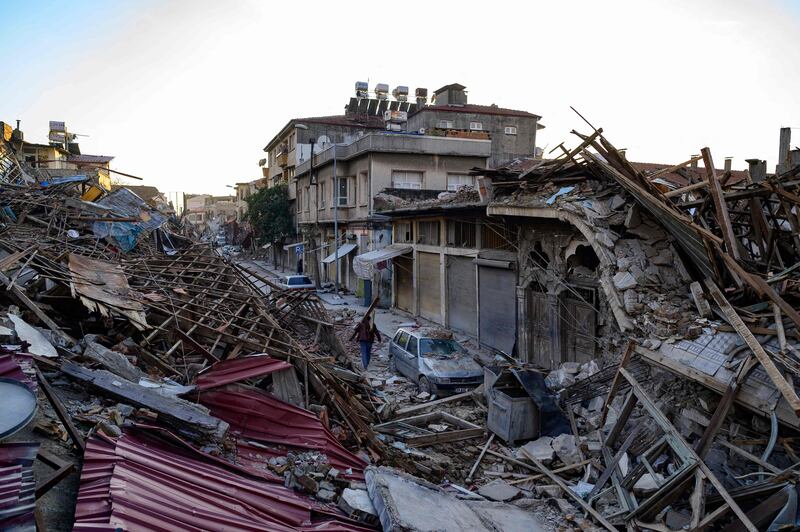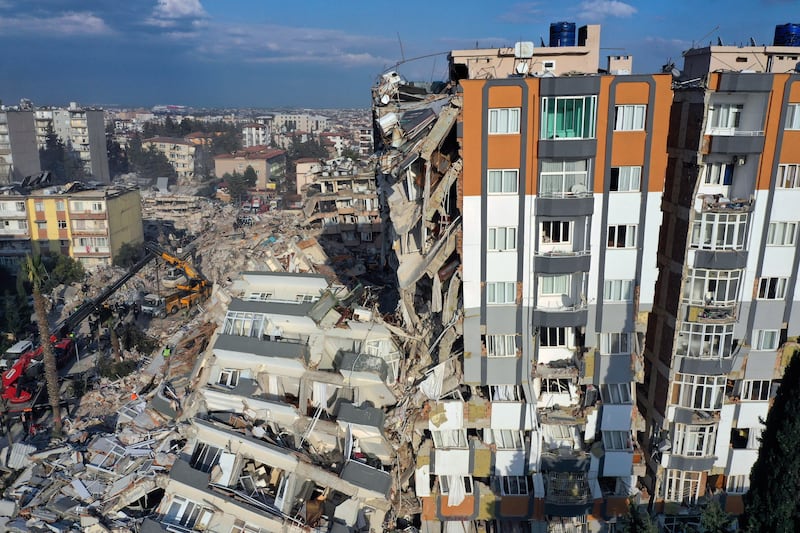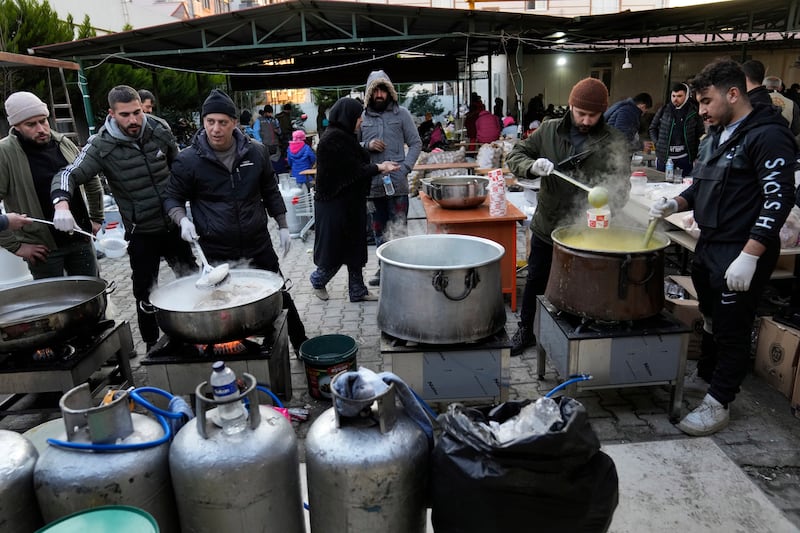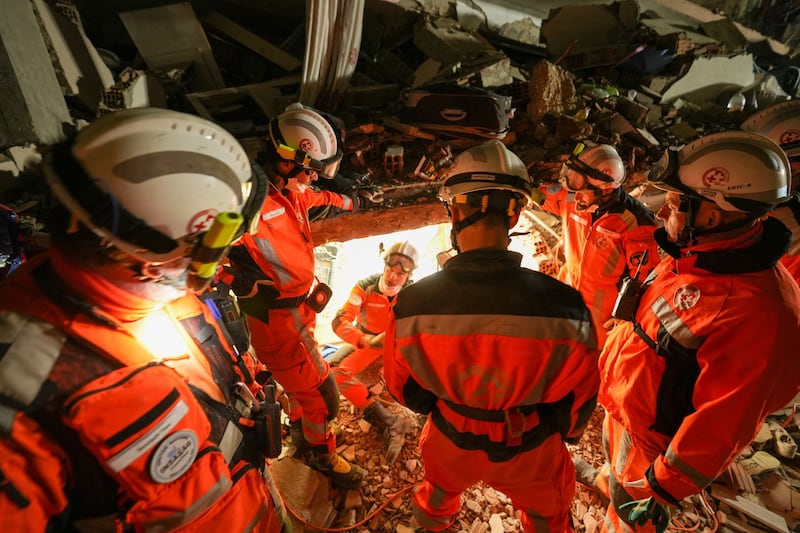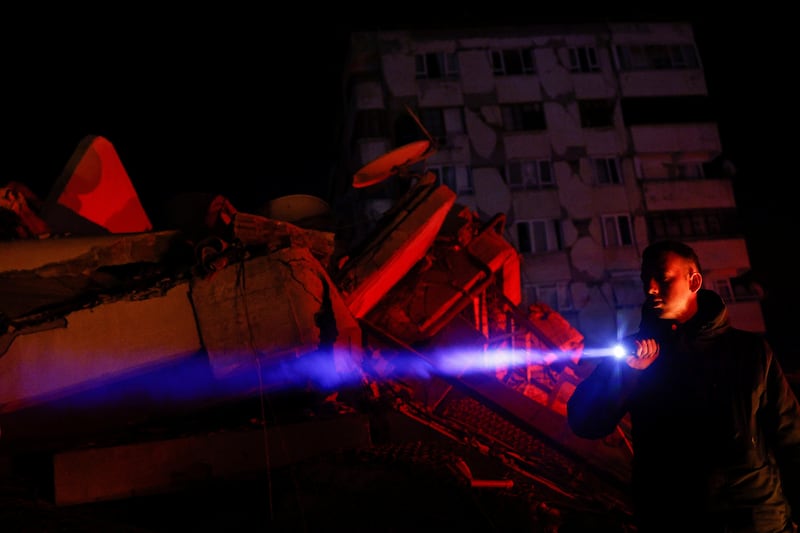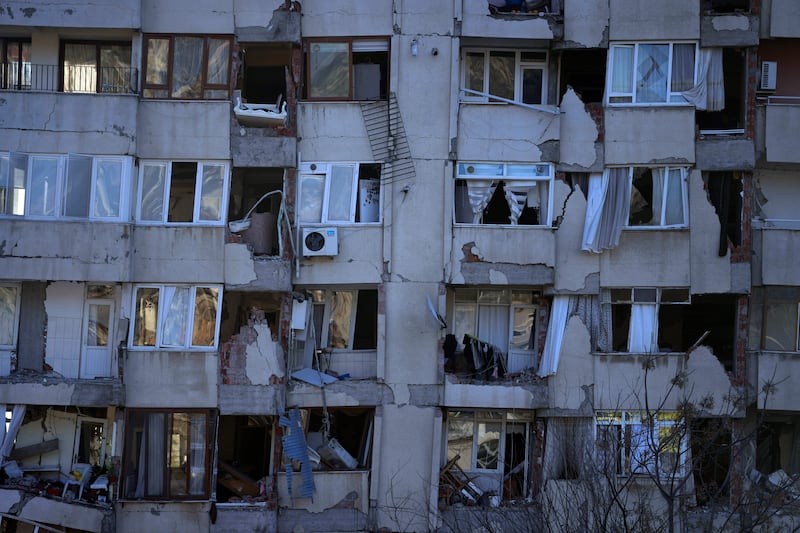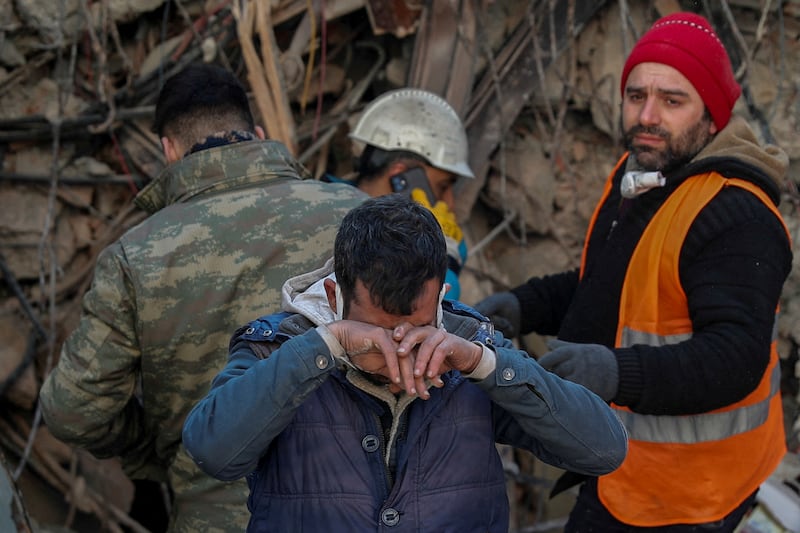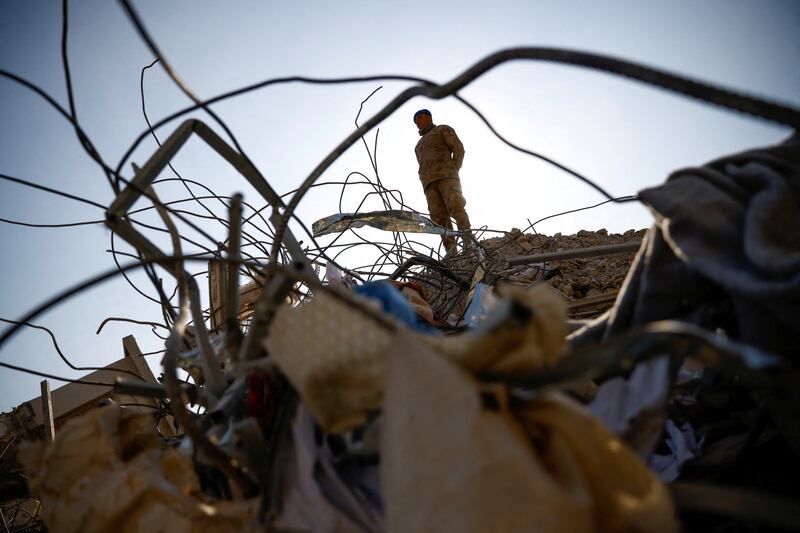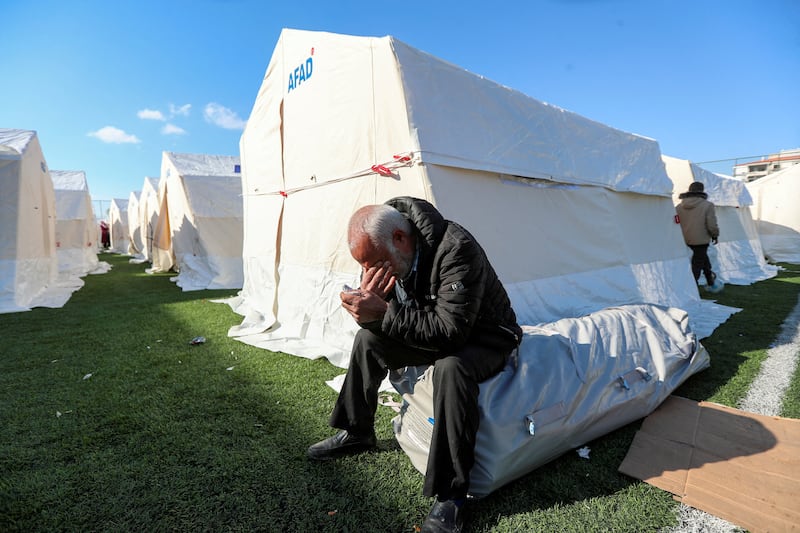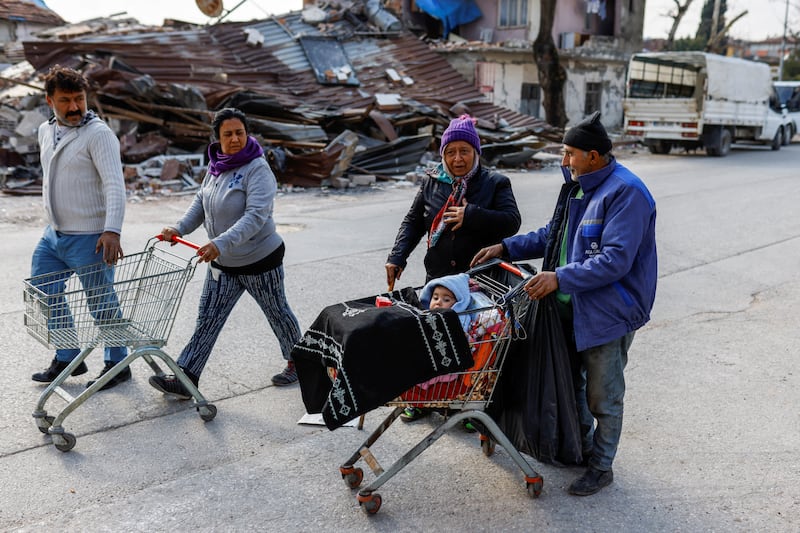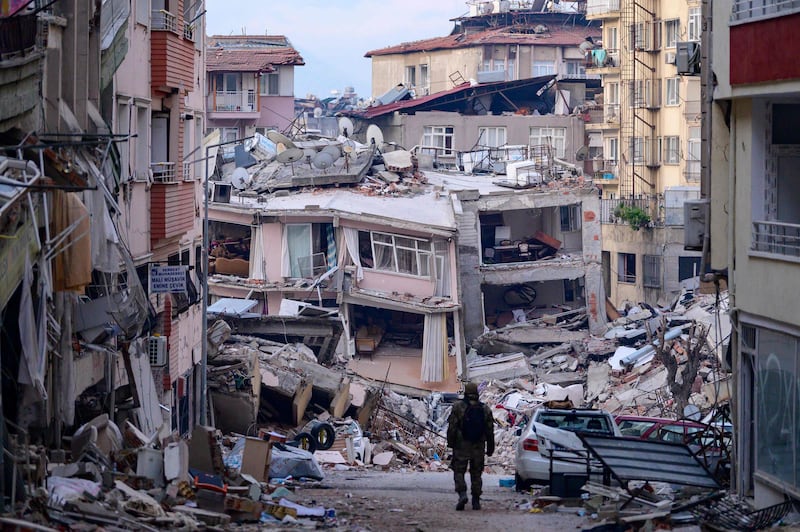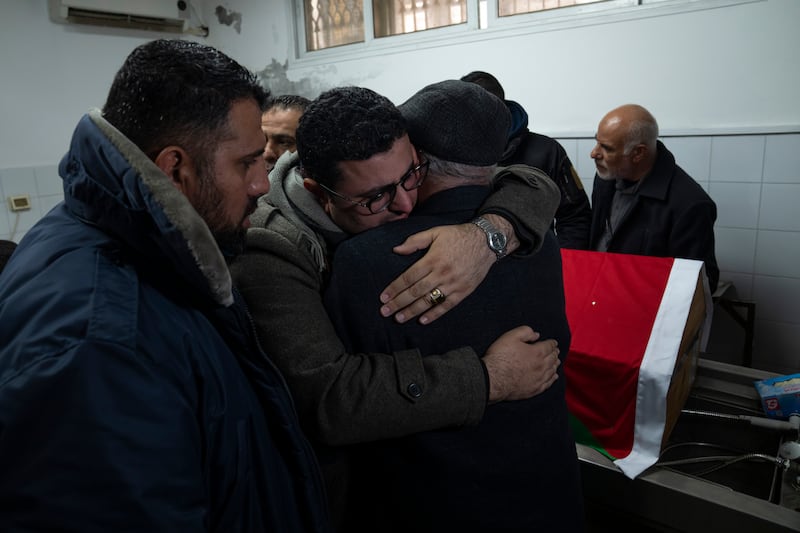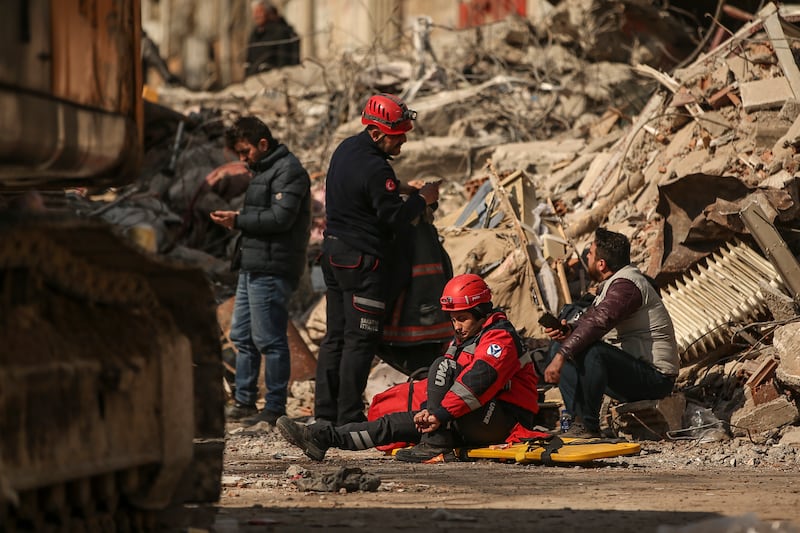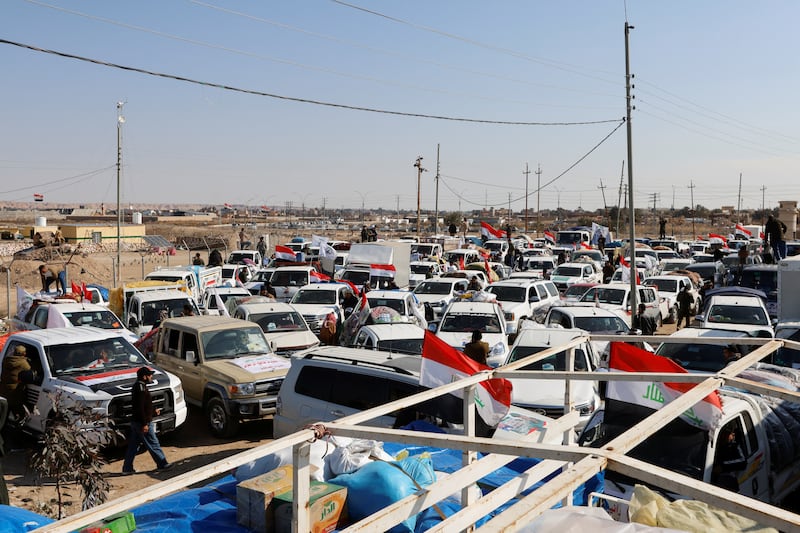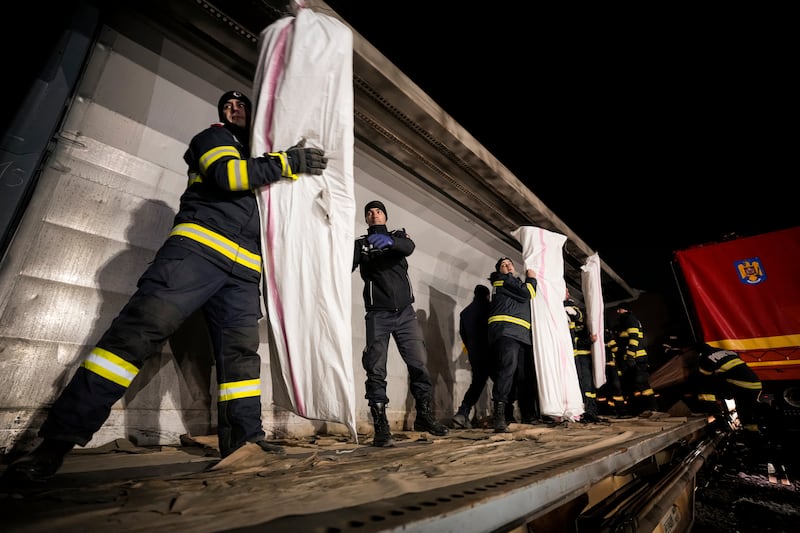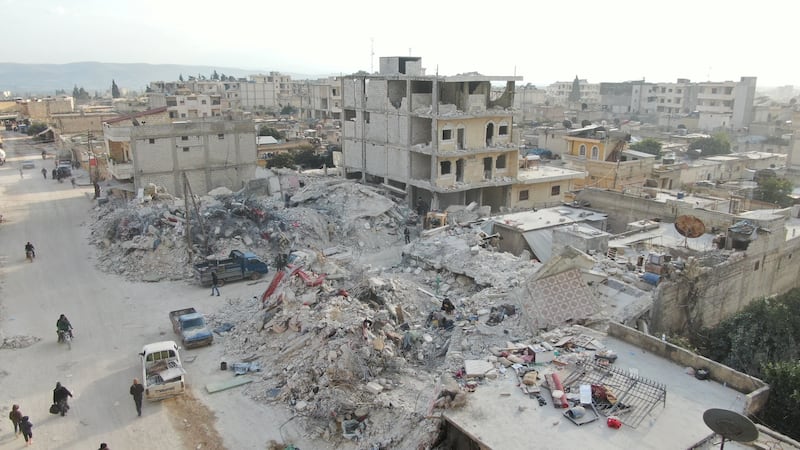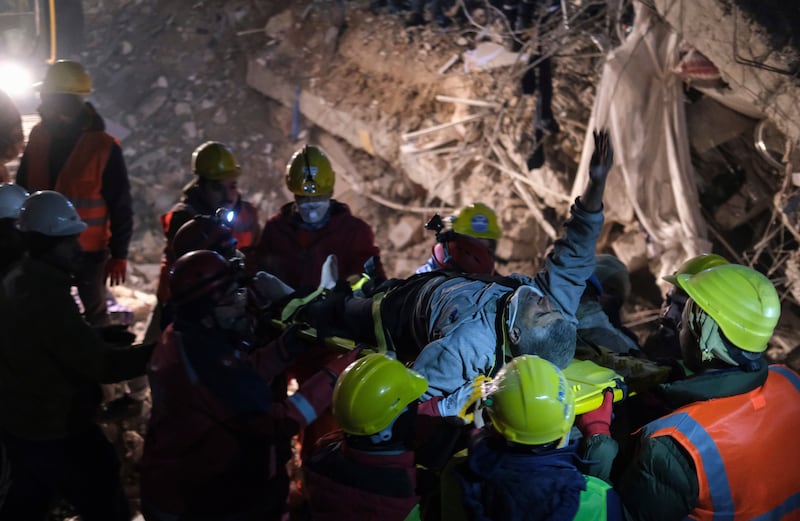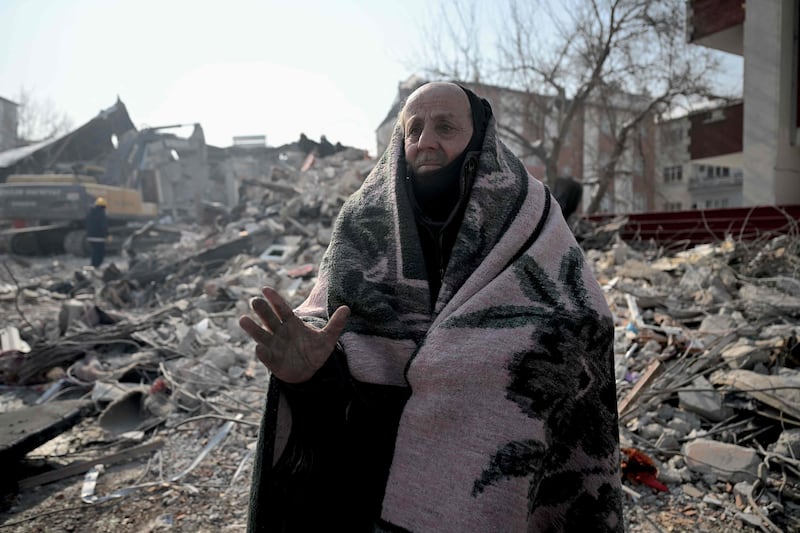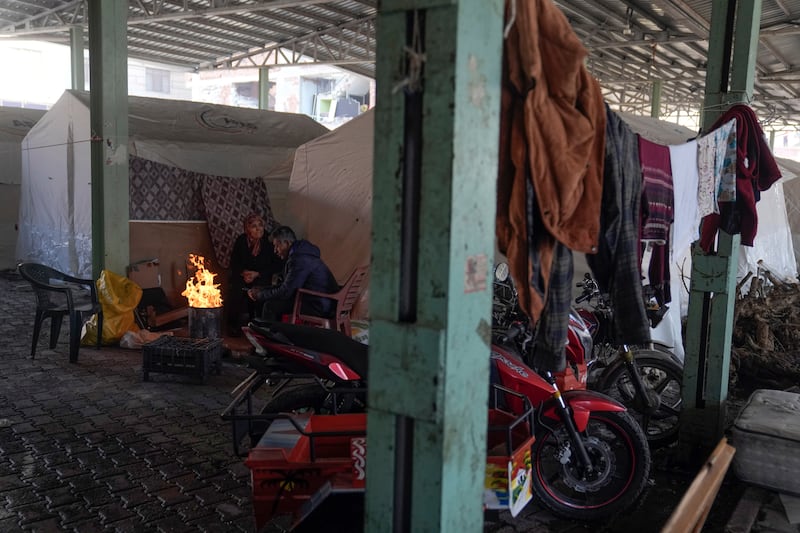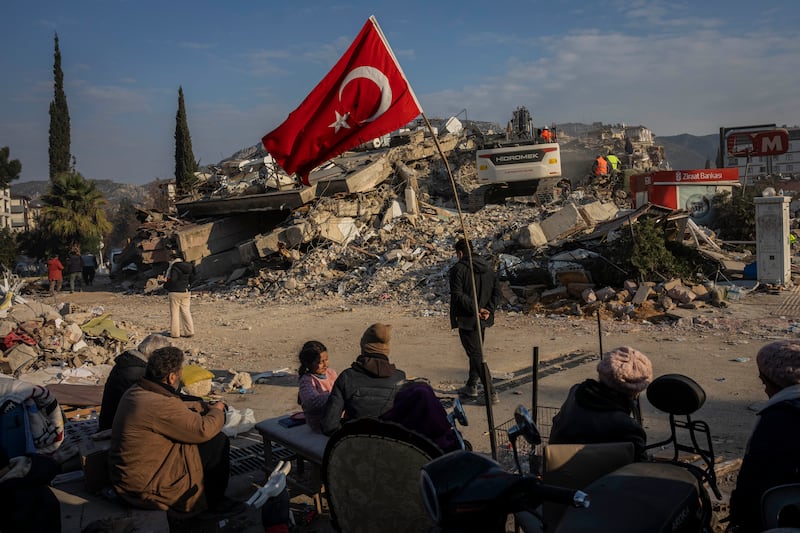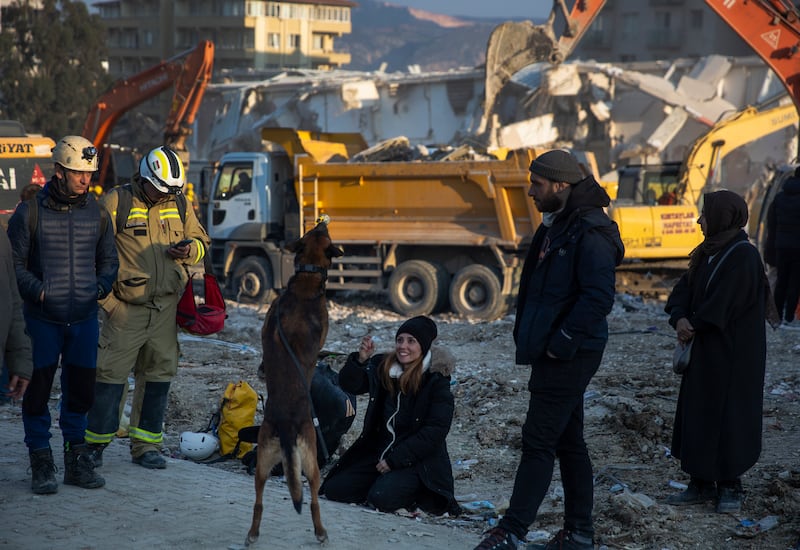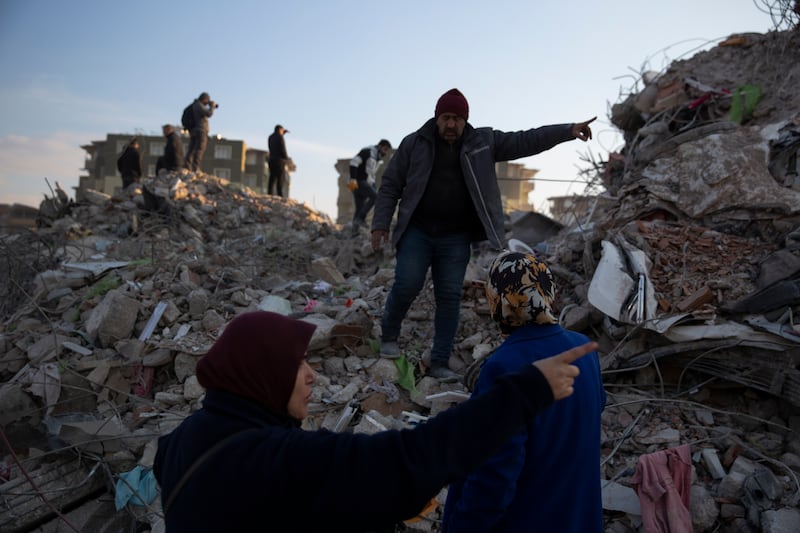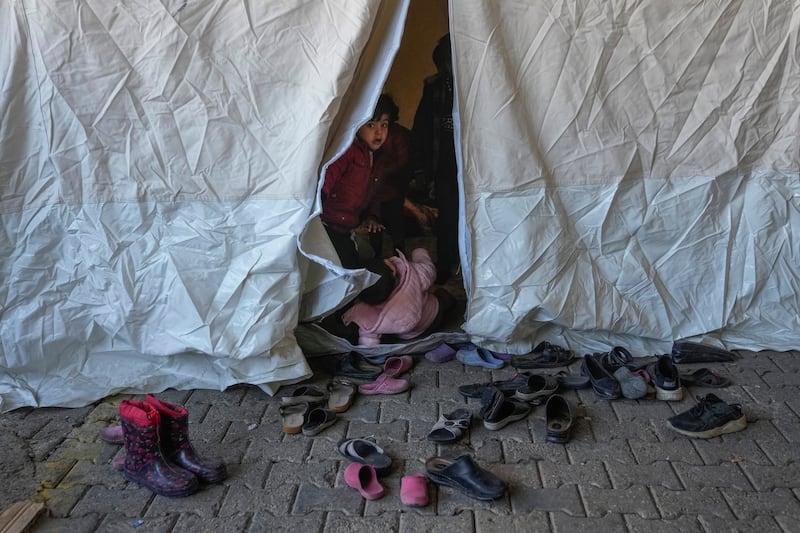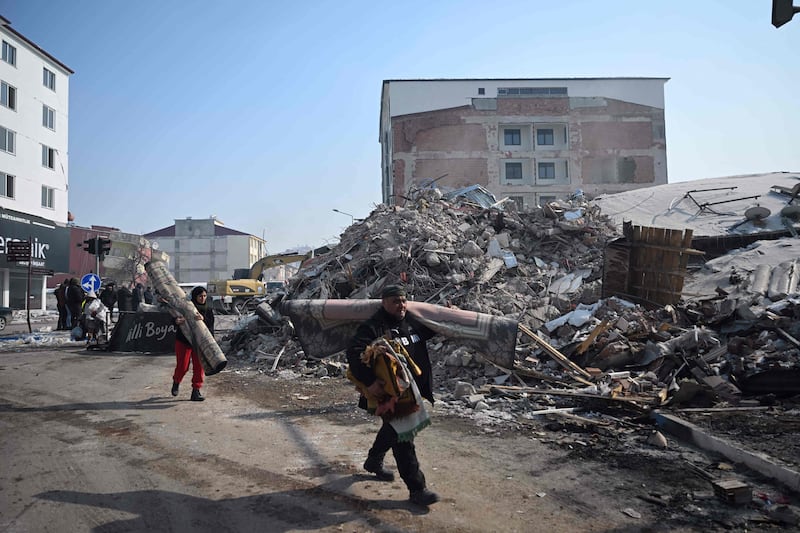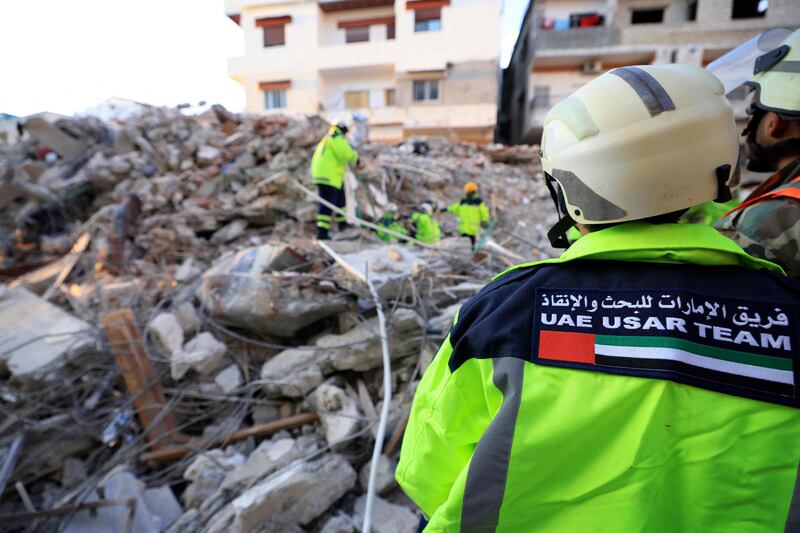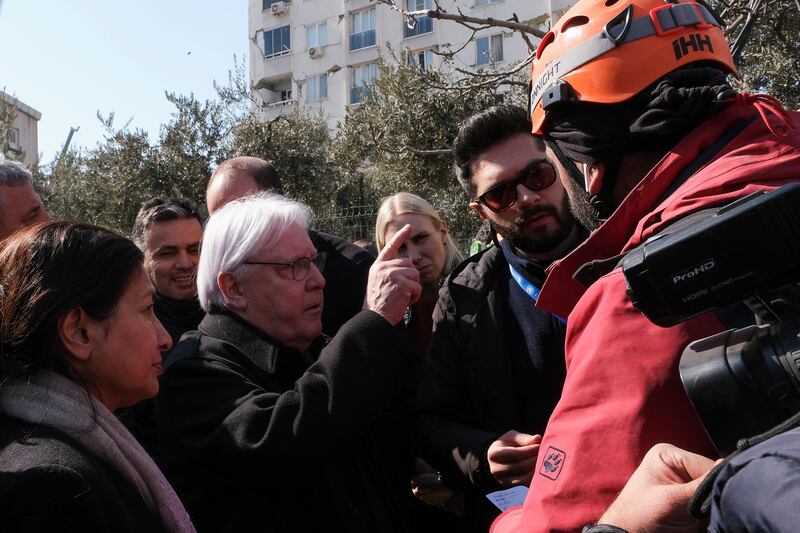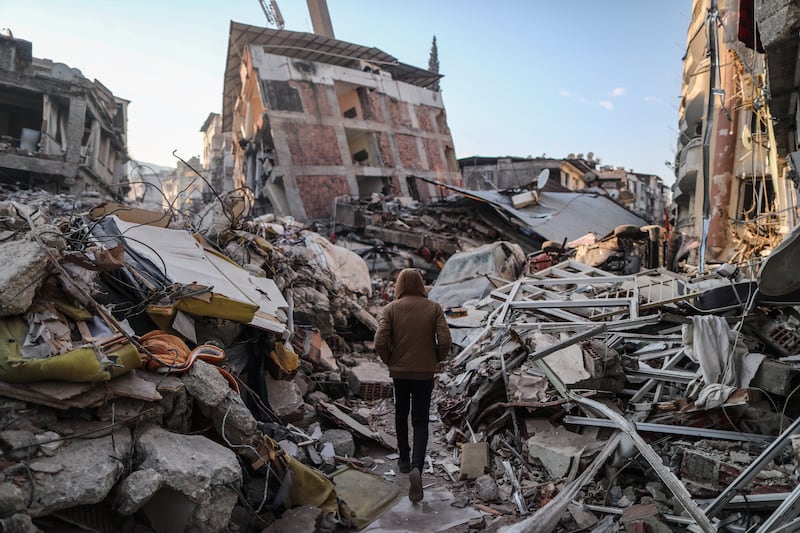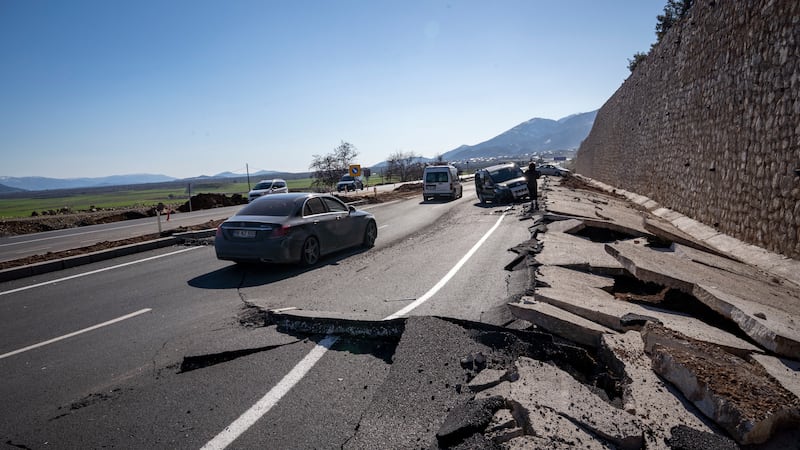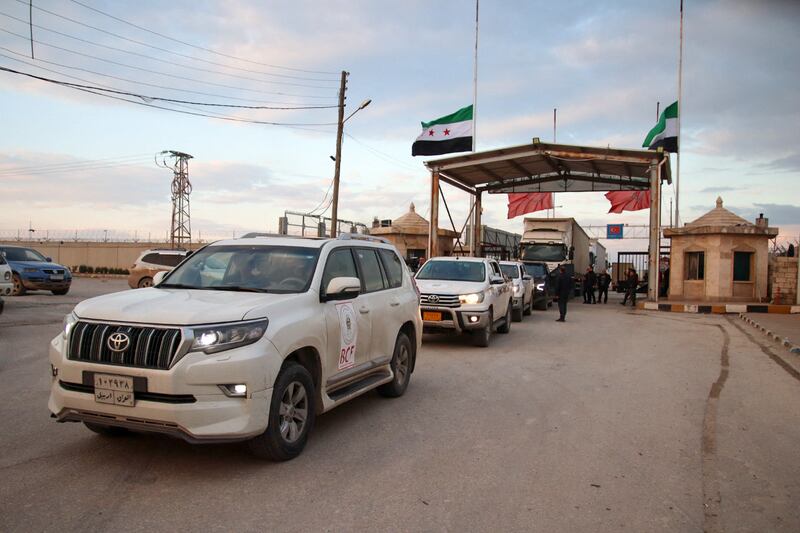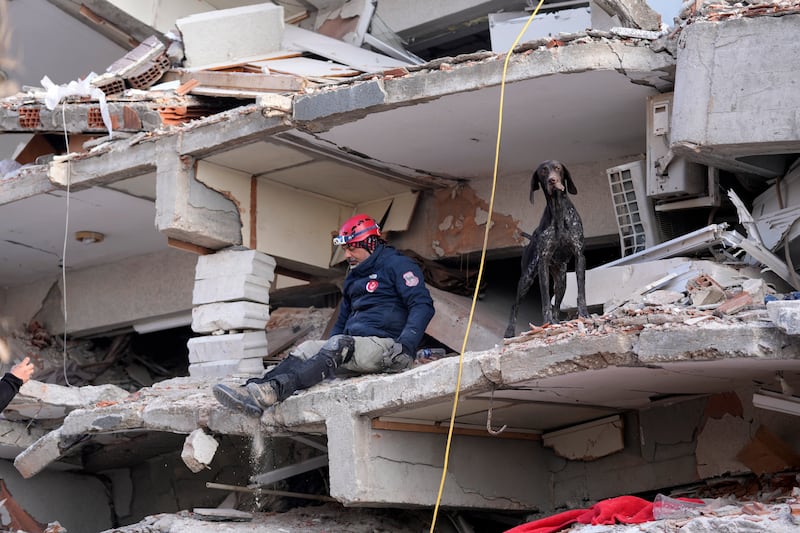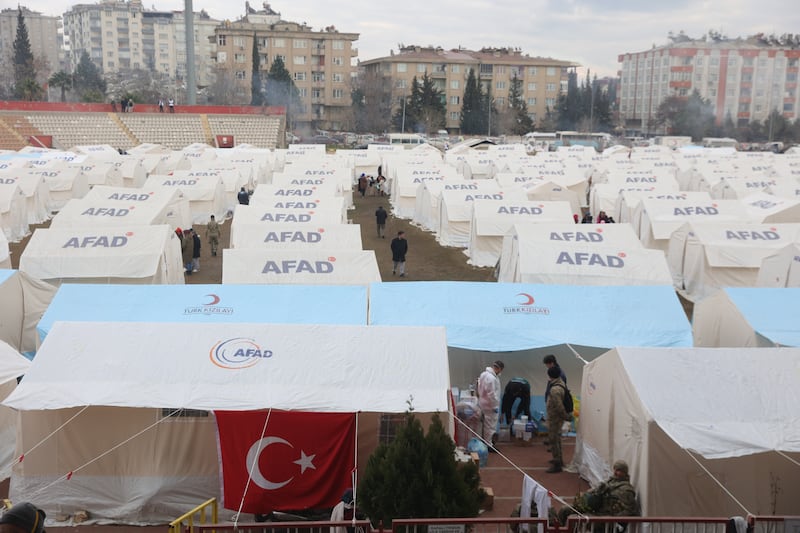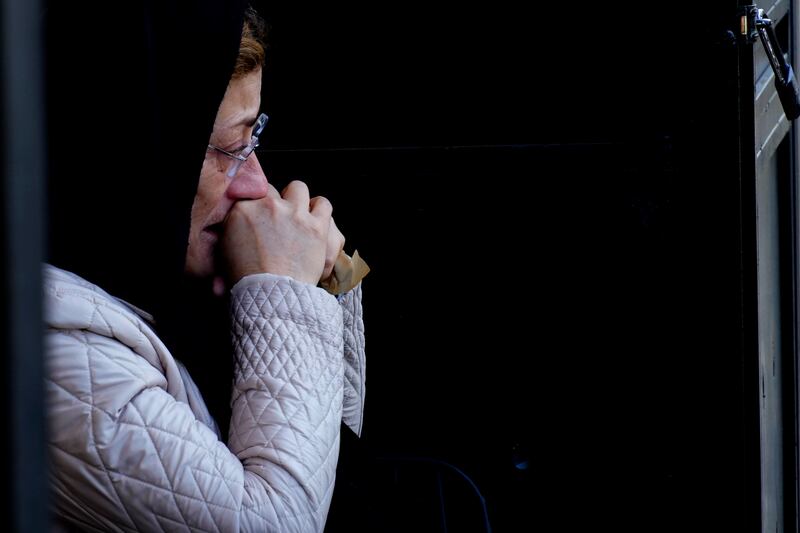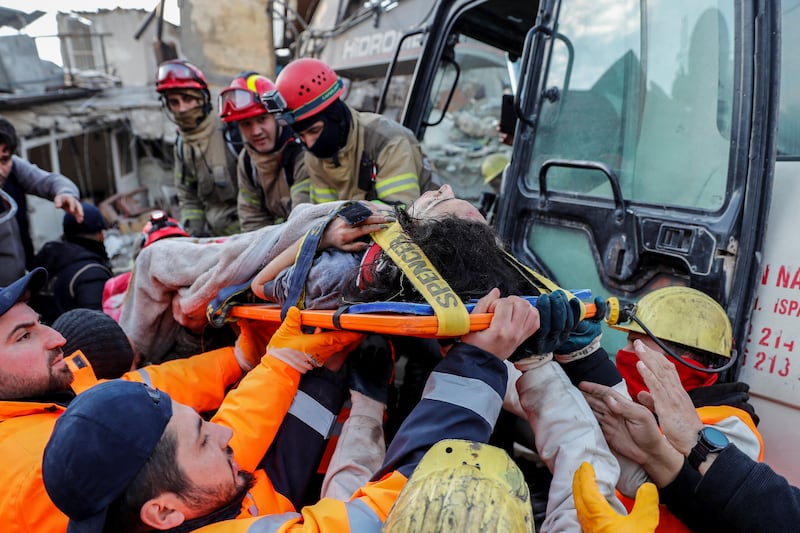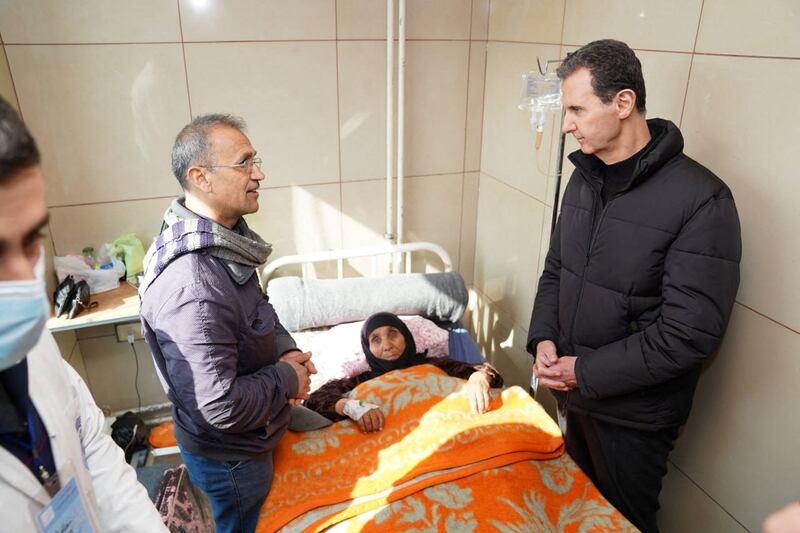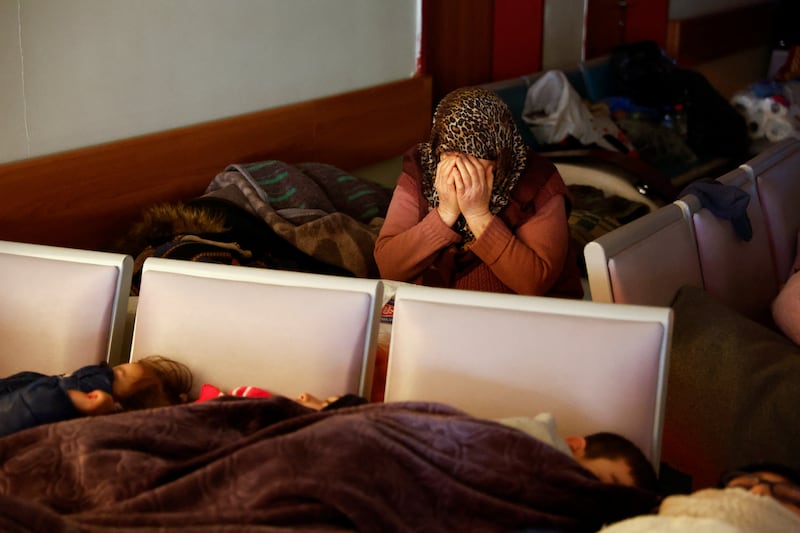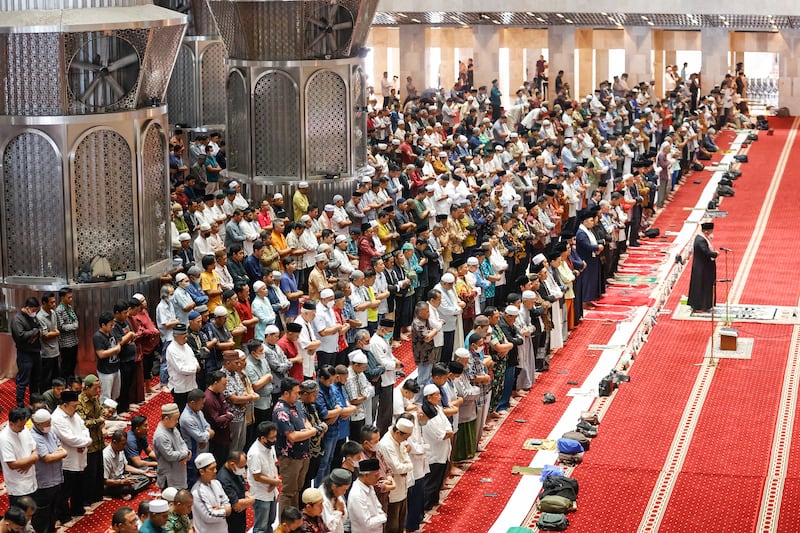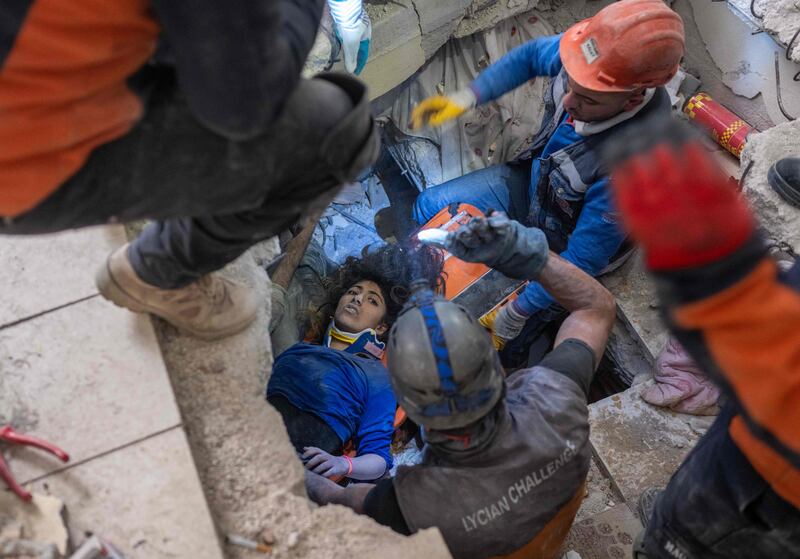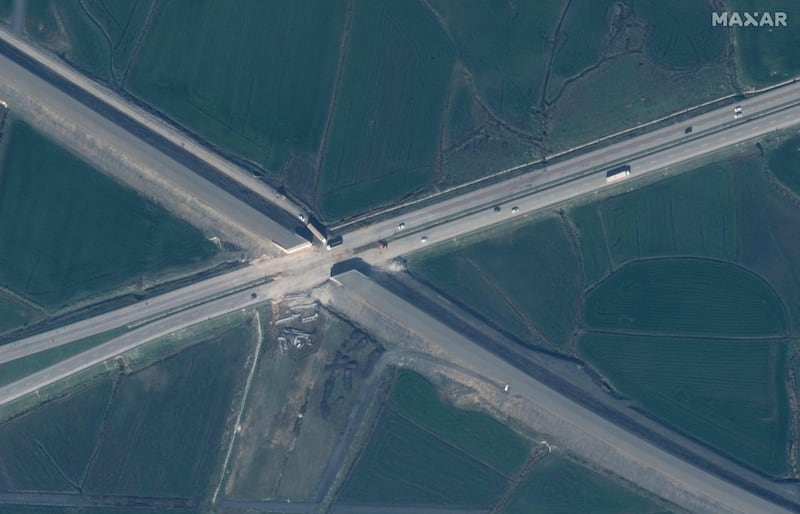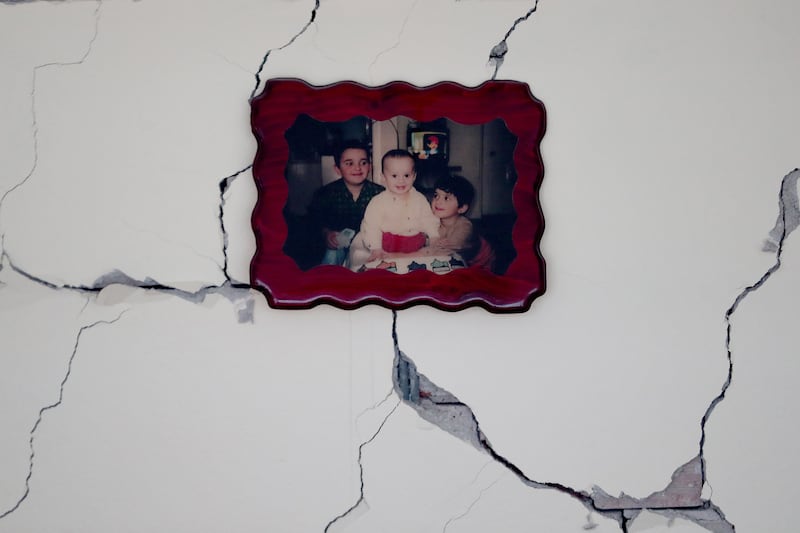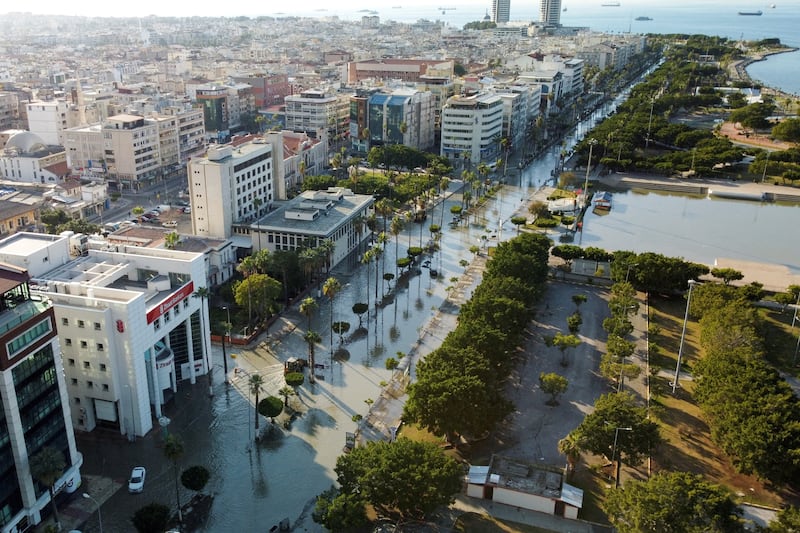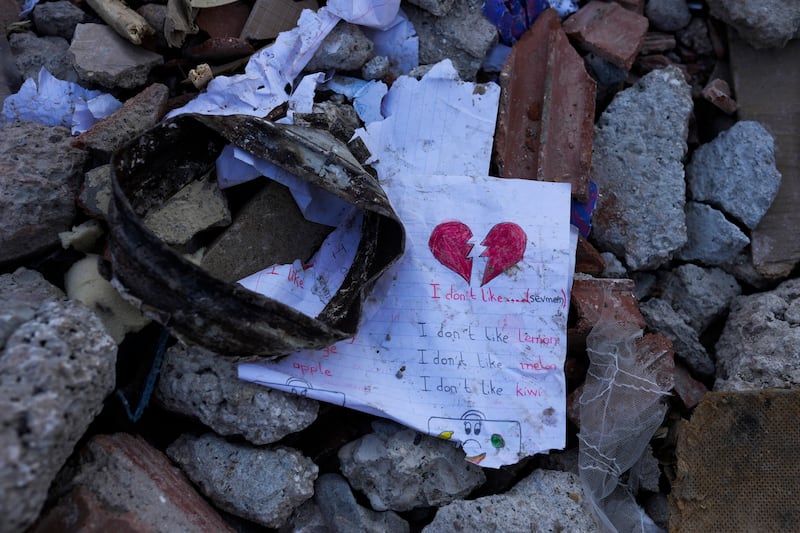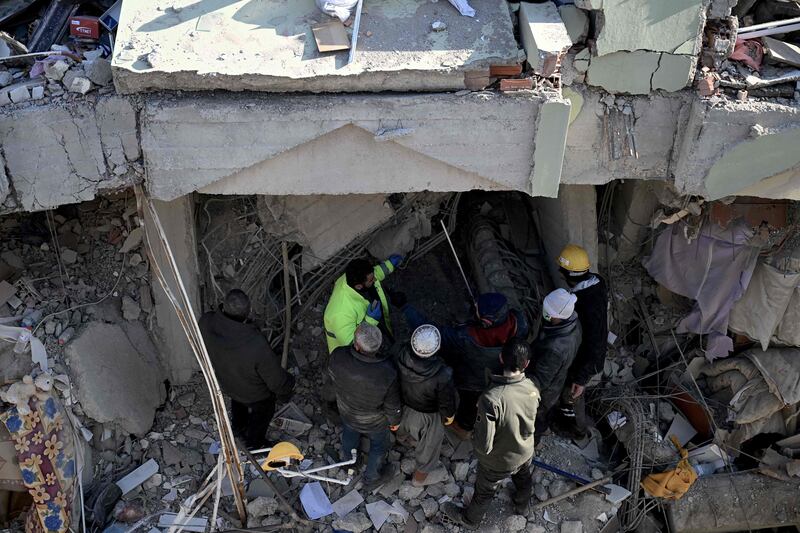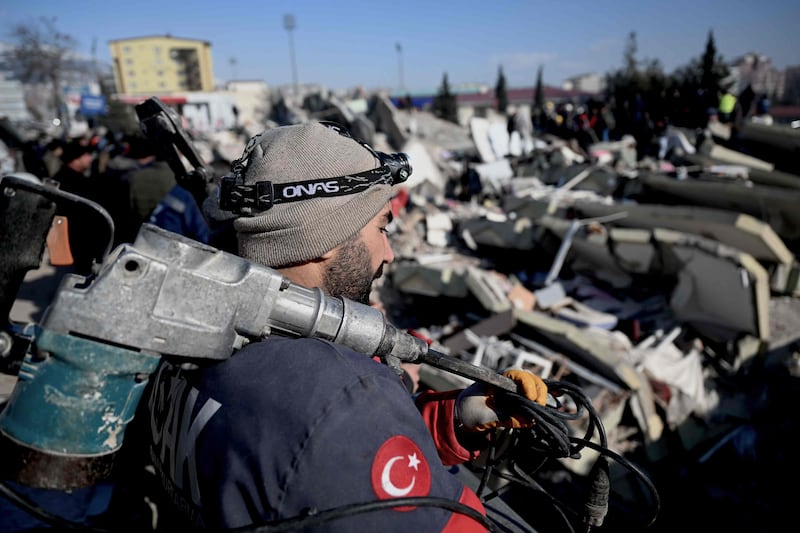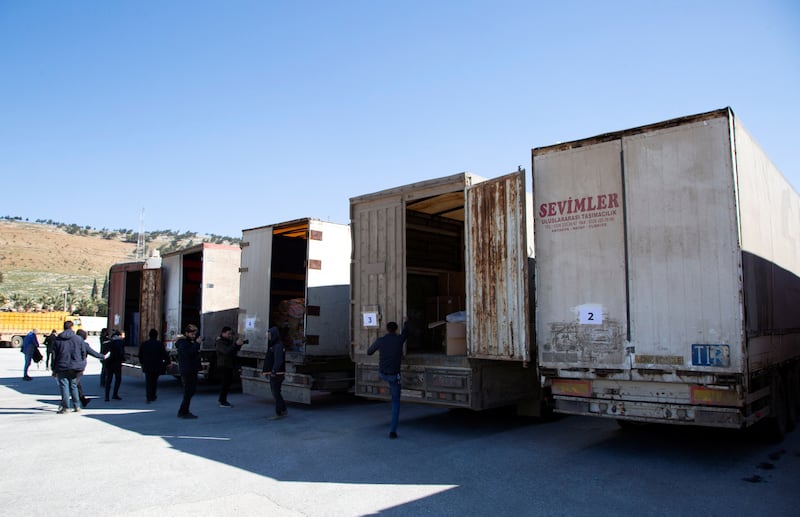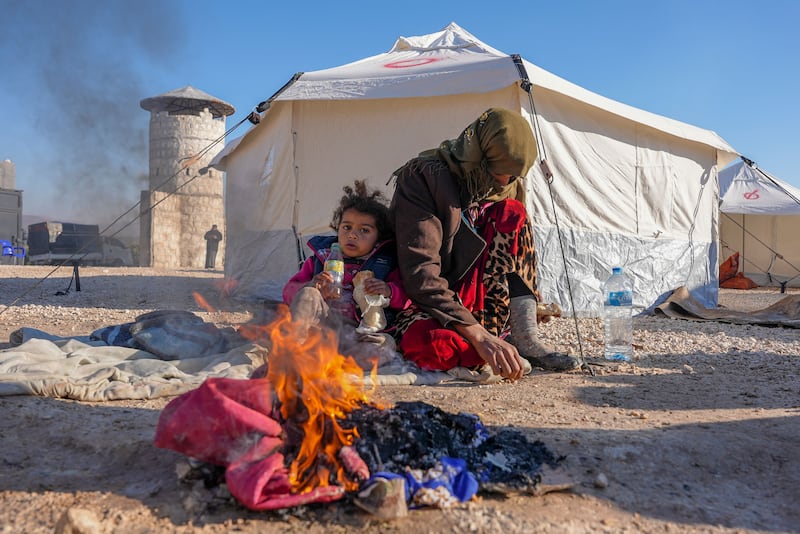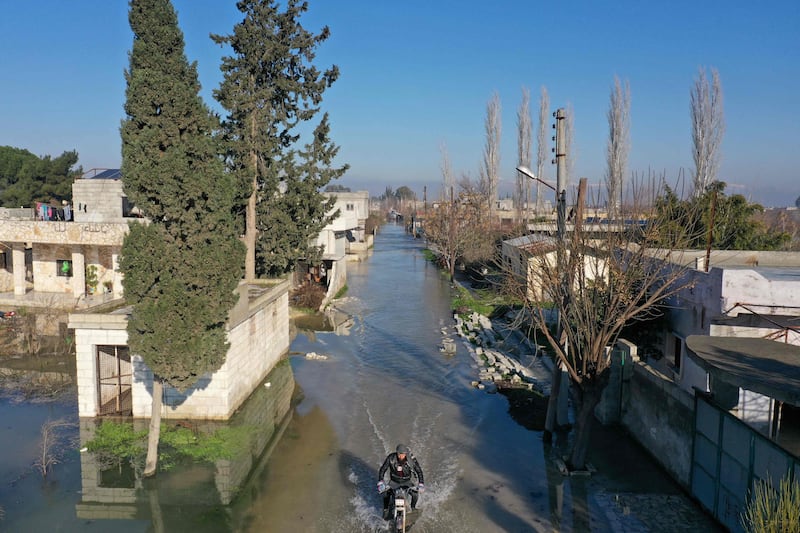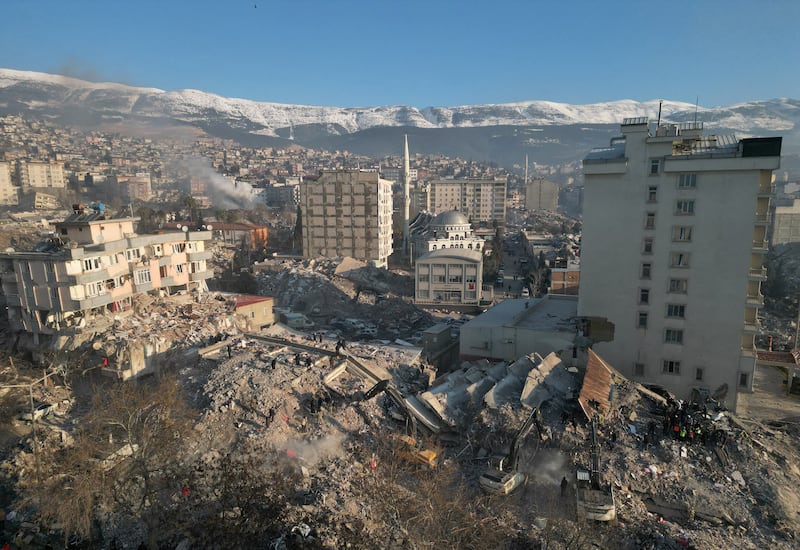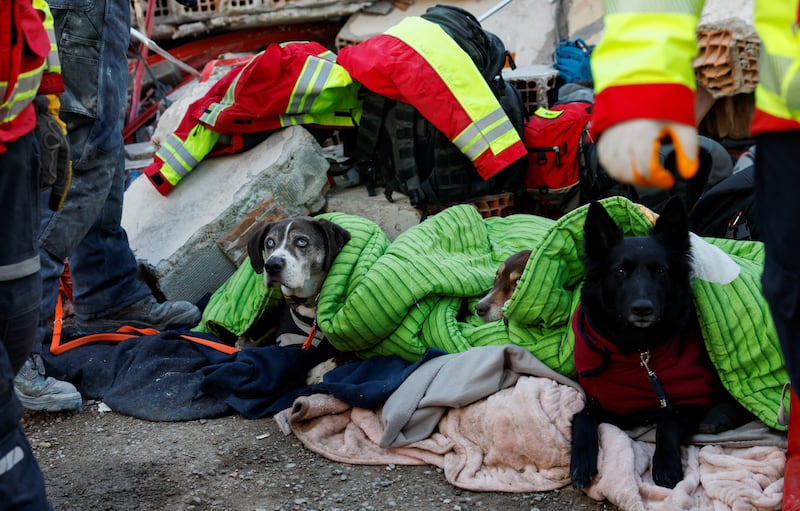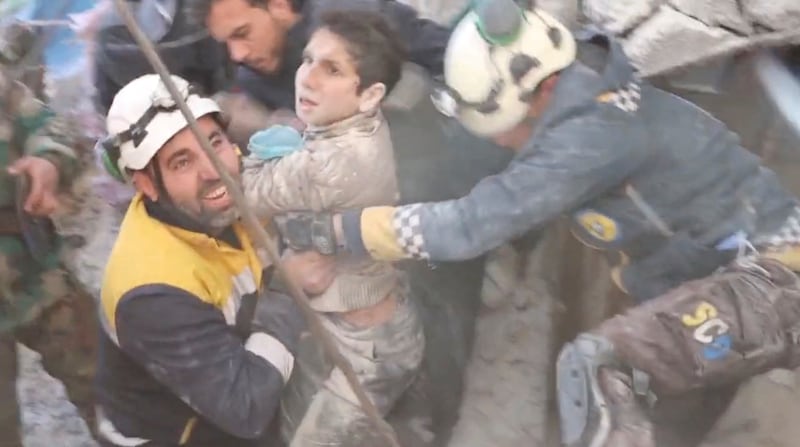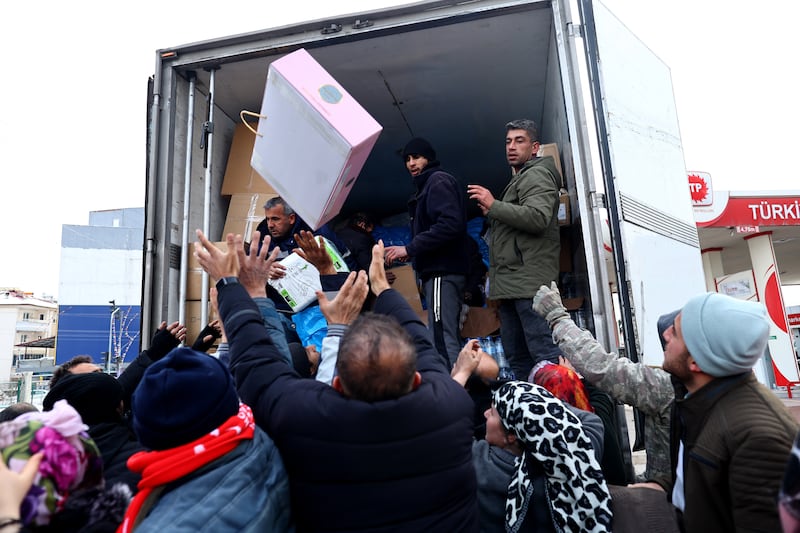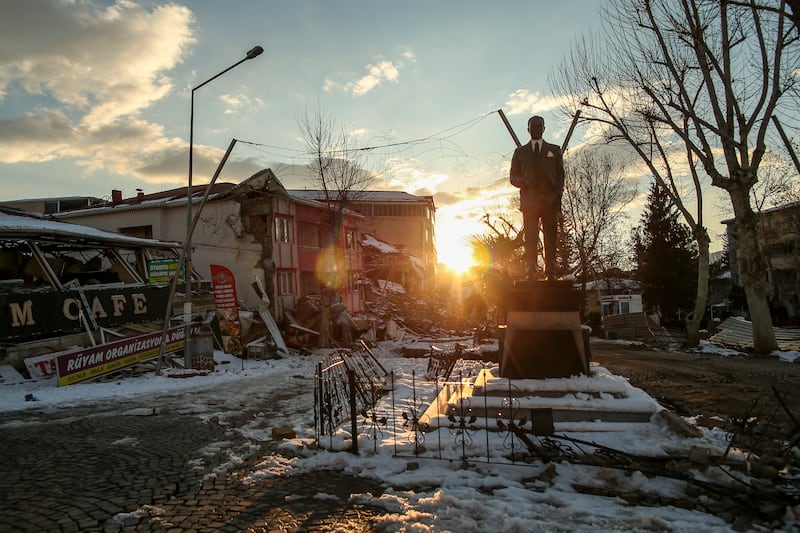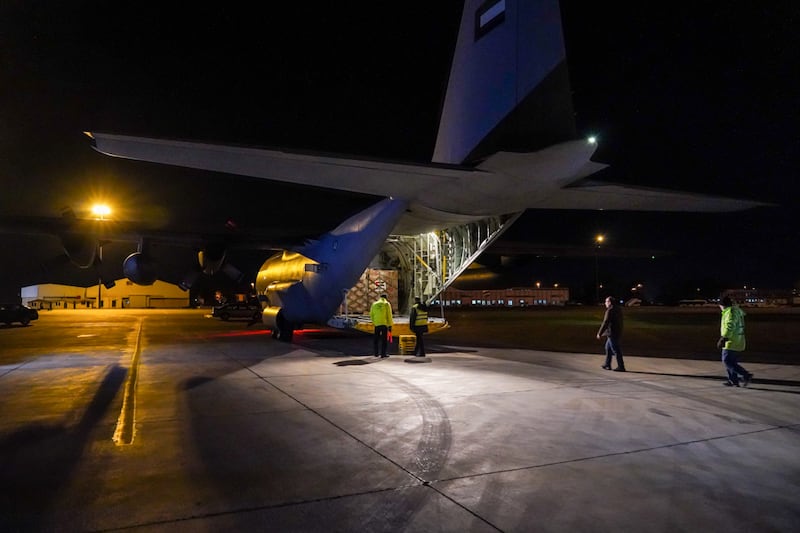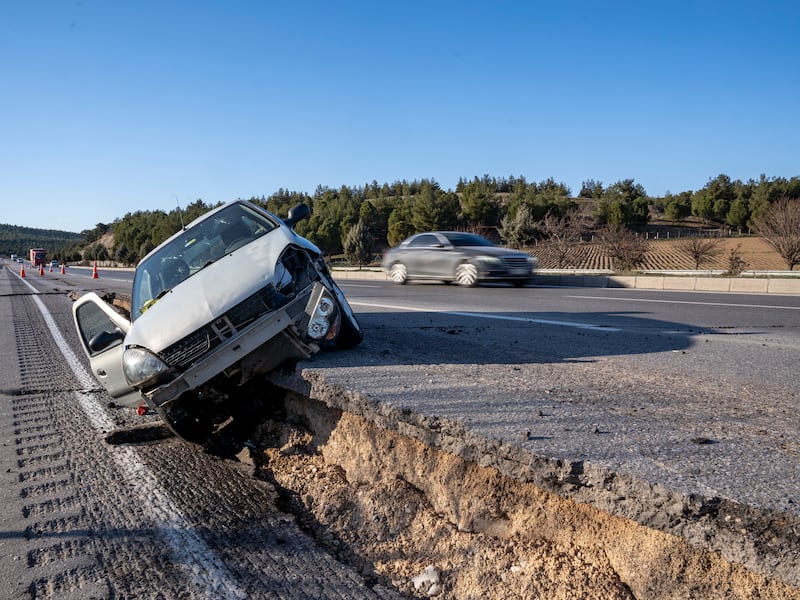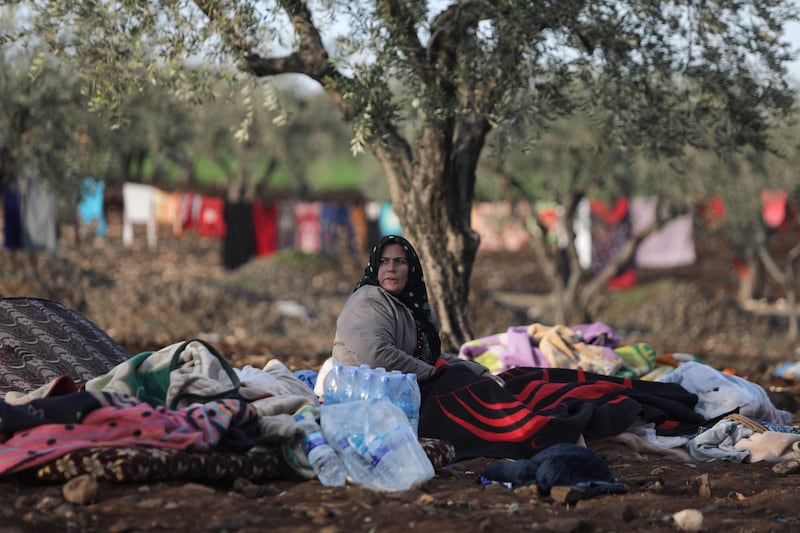Follow the latest news on the earthquake in Turkey and Syria
The images of horror emerging from south-east Turkey and northern Syria in recent days predominantly feature a background of flattened and mangled buildings.
While some observers say the seismic activity that resulted in last week's earthquake is a once-in-a-thousand-year event, experts believe recent changes in Turkish government construction standards and "zoning amnesties" may have contributed to millions of people living in unsafe buildings.
Since the ruling Justice and Development Party (AKP) came to power in 2002, the country has undergone an enormous, nationwide urbanisation in which billions of dollars was spent on infrastructure projects such as high-rise tower blocks that drew more and more residents into large metropolitan areas.
The vast construction and modernisation drive, however, may have resulted in corners being cut.
About half of Turkey’s 13 million buildings do not meet construction regulations, the country’s Environment and Urbanisation Ministry says.
In 2018, the government issued a zoning amnesty allowing property owners to register their illegally constructed buildings in return for a fee. About 1.8 million applications were approved, with the government receiving more than $3 billion in taxes and registration charges in return.
The following year, an expert quoted by Reuters said he feared the move would turn Turkish cities “into graveyards and result in coffins emerging from our homes”.
Four years on, these exact scenes are playing out in Hatay, Gaziantep and elsewhere in the south-east, where about 6,500 buildings are thought to have collapsed as a result of the earthquake.
“Municipalities do not audit new buildings very often, it’s the same problem across all Turkey,” says Pelin Pinar Giritlioglu, president of the Istanbul Branch of the Union of Chambers of Turkish Engineers and Architects.
“In small cities and small provinces, it is even more of a problem because the relationships [between local authorities and construction companies] are closer than in big cities, so often, public institutions overlook these kinds of deficiencies because of their close connections.”
On Twitter, users posted video clips of apparently new or recently built high-rise buildings partially collapsing as the concrete base cracked and gave way.
“This means that the government deemed them legal,” says Ms Giritlioglu.
Since 1940, Turkey has initiated 10 sets of earthquake regulations and was one of the first countries to adopt such laws.
Efforts have been made to construct earthquake-mitigating buildings, such as Istanbul’s Sabiha Gokcen airport terminal. Government figures quoted by Turkish media last year claimed that three million buildings had been “renewed” to withstand damaging seismic activity.
Others say the sheer magnitude of the earthquake February 6 should not be underplayed.
“There hadn’t been an equivalent-strength earthquake in this region for 900 years,” says Mustafa Erdik, president of the Turkish Earthquake Foundation.
“It was comparable with the San Francisco earthquake of 1906", which destroyed 80 per cent of that city.
The ruined city of Antakya after the earthquake - in pictures
Moreover, local and regional conflicts that sprung up over the past decade may also have contributed to the huge loss of life unfolding this week.
In 2015 and 2016, thousands of people were displaced from their homes in cities such as Cizre and Nusaybin, as well as the Sur district of Diyarbakir, as a result of fighting between the Turkish military and Kurdish armed groups. This resulted in an increased demand for accommodation and other infrastructure largely in Diyarbakir, the largest Kurdish-majority city in Turkey.
In the province of Antakya, the Turkish region worst hit by the earthquake, local authorities and communities a decade ago found themselves facing the prospect of adding housing for the hundreds of thousands of Syrians displaced by the conflict across the border.
About 500,000 Syrians arrived in each of Gaziantep and Sanliurfa, adding to the heavy demand for housing and associated infrastructure.
With metro populations of about two million each, Diyarbakir, Sanliurfa and Gaziantep are comparable in size to Copenhagen, Prague or Las Vegas, and now face an emergency response and rebuilding effort of a scale not seen anywhere in the world for perhaps decades.
What’s more, experts say the disaster doesn’t begin and end only in the cities.
“There are 13 million people living in this geography [region]," says Ms Giritlioglu.
“And we know nothing about what is happening in the rural areas yet."
